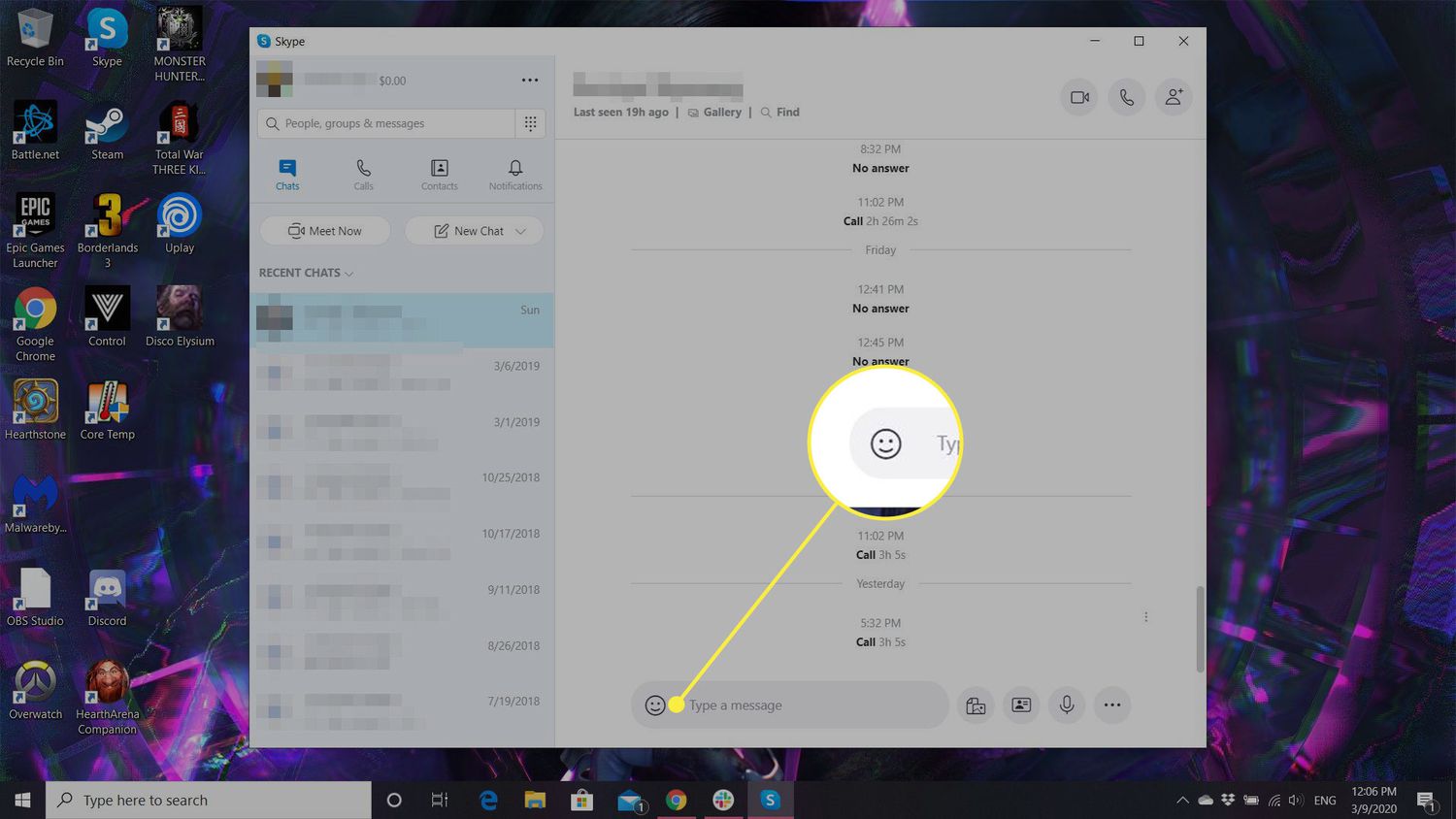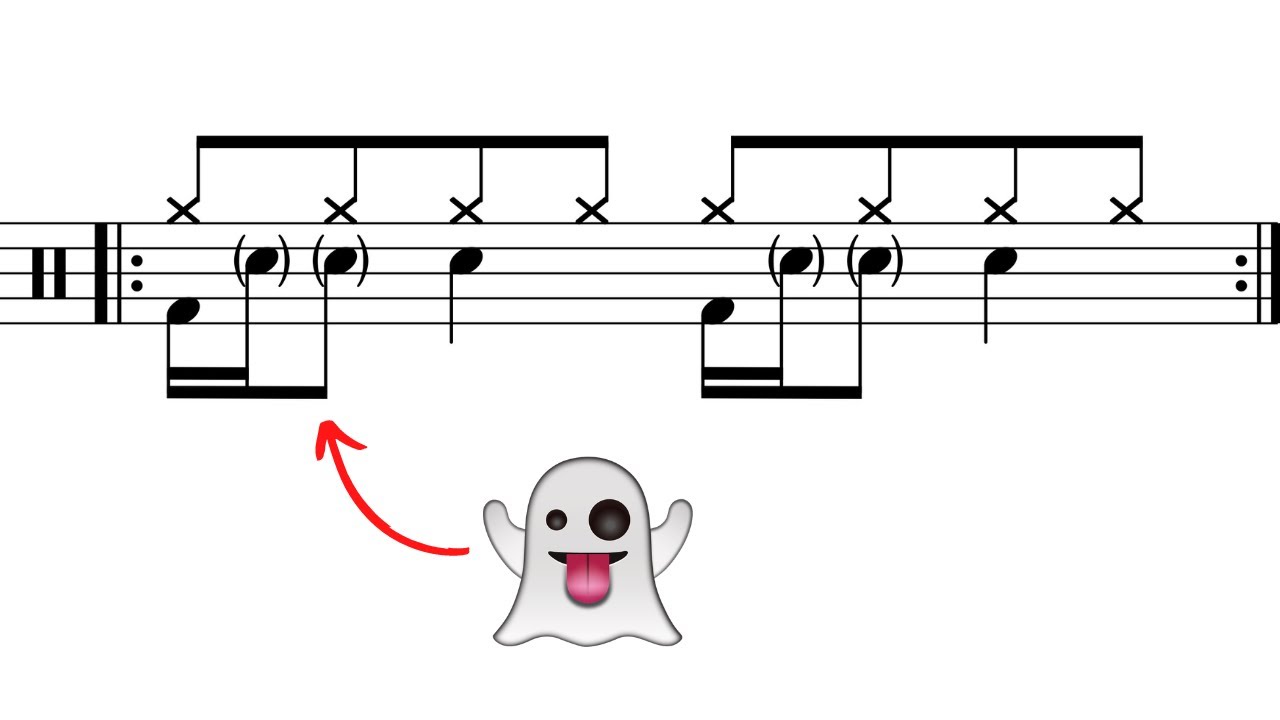Home>Events & Info>Note>How Long Is Every Note Music


Note
How Long Is Every Note Music
Modified: January 22, 2024
Discover the perfect length of every note in music and learn how to master the art of timing. Explore the intricate world of musical notes and their durations.
(Many of the links in this article redirect to a specific reviewed product. Your purchase of these products through affiliate links helps to generate commission for AudioLover.com, at no extra cost. Learn more)
Table of Contents
Introduction
Music is a universal language that has the power to touch our emotions and move us in profound ways. One of the essential elements of music is the concept of musical notes. These notes represent the pitch and duration of a sound, forming the foundation of melody, harmony, and rhythm.
Understanding the length of each individual note is crucial for musicians and composers as it determines the timing and rhythm of a musical piece. The duration of a note not only affects the overall structure and feel of a composition but also contributes to the expressiveness and interpretation of the music.
In this article, we will delve into the fascinating world of musical notes and explore the different lengths they can take. We will discuss the factors that influence note duration, commonly used note lengths in music, and the role of note length in musical composition. Additionally, we will explore the techniques used in sheet music to indicate note length accurately.
Whether you are an aspiring musician, a curious music lover, or simply interested in gaining insight into the intricacies of music, this article will provide you with a comprehensive understanding of note length and its significance in the realm of music.
The Concept of Musical Notes
In music, notes are the building blocks of melody, harmony, and rhythm. They represent specific pitches and durations, allowing musicians to create and perform music. The concept of musical notes dates back centuries and has evolved over time.
Notes are represented by symbols on sheet music, indicating the pitch and duration of a sound. The pitch refers to how high or low the note sounds, while the duration determines how long the note is held or sustained. Together, pitch and duration give each note its unique identity.
In Western music, the note names are derived from the first seven letters of the alphabet: A, B, C, D, E, F, and G. These letters represent specific pitches on the musical scale. Each note can have different variations, known as octaves, which refer to the same pitch at different frequencies.
The duration of a note is measured in relation to a basic unit of time called a beat. A beat is the pulse or rhythm that runs through a piece of music. Notes are assigned different durations based on their relationship to the beat. Shorter durations represent faster notes, while longer durations denote slower notes.
It’s important to note that the actual length of a note can vary depending on the tempo or speed of the music. For example, the same note duration can be played faster or slower based on the desired interpretation of the music.
By understanding the concept of musical notes, musicians can effectively communicate and interpret music. It enables them to read and decipher sheet music, perform complex rhythms, and create their own compositions. The concept of notes forms the foundation for musical expression and communication among musicians.
The Length of Each Individual Note
In music notation, each individual note has a specific duration that determines how long it is held or played. The length of a note is indicated by its shape and the presence of additional symbols or markings.
The most basic note length is the whole note, represented by an open oval shape. The whole note is considered a long duration, and it typically lasts for four beats in a standard time signature. As we divide the beat into smaller units, we encounter notes of shorter durations.
The half note, represented by an open oval shape with a stem, lasts for half the duration of a whole note. In a 4/4 time signature, which is commonly used in many genres, a half note lasts for two beats.
Next in line is the quarter note, which contains a filled-in oval shape with a stem. It lasts for one-fourth of the duration of a whole note, equating to one beat in a 4/4 time signature.
The eighth note is represented by a filled-in oval shape with a flag attached to the stem. An eighth note lasts for half the duration of a quarter note, which means it lasts for half a beat in a 4/4 time signature.
Continuing the pattern, we have the sixteenth note, represented by a filled-in oval shape with two flags attached to the stem. It lasts for half the duration of an eighth note, which means it lasts for one-fourth of a beat in a 4/4 time signature.
As we further divide the beat, we encounter even shorter notes such as the thirty-second note, sixty-fourth note, and even smaller subdivisions. These notes are particularly common in fast-paced and intricate musical passages.
Each note length produces a distinct rhythmic pattern and contributes to the overall feel and flow of the music. By combining different note lengths, musicians can create intricate rhythms and complex musical phrases.
It’s important to note that note values can be modified through the use of dots and flags. A dot placed after a note increases its duration by half. For example, a dotted half note lasts for three beats, while a dotted quarter note lasts for one and a half beats.
Understanding the length of each individual note is crucial for musicians as it allows them to accurately follow and interpret the timing of a musical piece. By mastering note lengths, musicians can effectively convey the intended rhythm and feel of the music they are performing or composing.
Factors Affecting Note Length
The length of a note in music is not solely determined by its visual representation on sheet music. Several factors can influence the actual duration and interpretation of a note. These factors play a significant role in shaping the rhythmic feel and expression of a musical piece.
One primary factor that affects note length is the tempo of the music. Tempo refers to the speed or pace at which a piece of music is performed. Notes played at a faster tempo will naturally have shorter durations, while slower tempos allow for longer note durations. The conductor or performer sets the tempo, and it greatly influences how the notes are played and perceived by the audience.
Another factor that impacts note length is the musical style or genre. Different styles of music have their own conventions when it comes to interpreting note lengths. For example, classical music often demands precise note durations and adherence to the written notation, while jazz and other improvisational genres allow for more flexibility and interpretation in note lengths, creating a more expressive and unique performance.
The specific instrument being played also affects the interpretation of note lengths. Instruments with longer sustain, such as a piano or organ, allow notes to be held for a longer duration. On the other hand, instruments like percussion or plucked strings have a naturally shorter sustain, resulting in shorter note lengths.
The artistic interpretation of the musician or performer is another crucial factor. Musicians have the ability to add personal expression and nuances to the way they play notes, affecting the perceived length. They can use techniques such as legato (smooth and connected notes) or staccato (short and detached notes) to alter the duration and feel of the music.
Additionally, the time signature of a piece can influence note length. Different time signatures define the number of beats in a measure and often dictate how notes should be divided. For example, a time signature of 6/8 divides each beat into three eighth notes, resulting in a different rhythmic feel compared to 4/4 time signature where each beat is divided into four quarter notes.
Lastly, the composer’s intent and the overall musical context play a significant role in determining note length. Composers may use specific notation, markings, or verbal instructions to guide performers on how to interpret note lengths to achieve their desired musical expression and phrasing.
By considering these factors, musicians can more accurately interpret note lengths to convey the intended musical expression, enhancing the overall musical experience for both performers and listeners.
Common Note Lengths in Music
In music, there are several commonly used note lengths that form the foundation of rhythm and timing. These note lengths represent various durations and are essential in creating the rhythmic structure of a musical piece.
One of the most commonly used note lengths is the whole note. Represented by an open oval shape, the whole note typically lasts for four beats in a 4/4 time signature. It is often used to sustain a pitch or create a long-held melody.
The half note is another frequently encountered note length. It is represented by an open oval shape with a stem and lasts for two beats in a 4/4 time signature. The half note is commonly used to create a steady rhythm or to provide a strong downbeat in the music.
Next in line is the quarter note, which is represented by a filled-in oval shape with a stem. It has a duration of one beat in a 4/4 time signature, making it a fundamental building block of rhythm. The quarter note is often used in melodies, accompaniments, and rhythmic patterns.
The eighth note is a shorter duration note, represented by a filled-in oval shape with a flag attached to the stem. It lasts for half a beat in a 4/4 time signature, allowing for faster and more intricate rhythmic patterns. Eighth notes are commonly used to create rhythmic syncopation and add energy to a musical passage.
Sixteenth notes are even shorter in duration. Represented by a filled-in oval shape with two flags attached to the stem, they last for one-fourth of a beat in a 4/4 time signature. Sixteenth notes are often utilized to create intricate and fast-paced rhythmic patterns, adding complexity and excitement to the music.
Besides these common note lengths, there are also note lengths that are further divided, such as thirty-second notes, sixty-fourth notes, and even smaller subdivisions. These shorter note lengths are commonly found in fast-paced and technically demanding music.
In addition to the basic note lengths, notes can also be modified with dots or flags to indicate longer durations. A dot placed after a note increases its duration by half. For example, a dotted half note lasts for three beats, while a dotted quarter note lasts for one and a half beats.
By understanding and utilizing these common note lengths, musicians and composers can create a variety of compelling rhythmic patterns, accentuate melodic phrases, and bring depth and dynamics to their musical compositions.
The Role of Note Length in Musical Composition
Note length plays a crucial role in musical composition as it contributes to the overall structure, rhythm, and emotional impact of a piece. The deliberate use of note lengths allows composers to create a sense of tension, release, and movement within their compositions.
One of the primary functions of note length is to establish the rhythm and pulse of a musical piece. By varying the lengths of notes, composers can create rhythmic patterns and syncopations that add interest and energy to the music. The placement of longer notes can create a sense of stability and grounding, while shorter note lengths can introduce a feeling of speed and excitement.
Note length also influences the phrasing and articulation of a melody or musical line. Longer notes provide the opportunity for sustained and expressive playing, allowing the performer to shape and contour the music with subtlety and emotion. On the other hand, shorter notes can be used to create vibrant and agile passages, showcasing technical skill and precision.
The manipulation of note lengths can also help build tension and release within a composition. Longer notes can create anticipation and a sense of lingering, while shorter notes can introduce moments of resolution and forward motion. By strategically altering the note lengths, composers can guide the listener through a musical journey, heightening the emotional impact and engagement of the piece.
Furthermore, note length can contribute to the overall mood and atmosphere of a composition. Longer, sustained notes can create a sense of calmness and introspection, while shorter, staccato notes can add a sense of urgency and playfulness. Composers can use note lengths to align with the intended emotional message of the piece, evoking specific feelings and responses from the listener.
Note length is also instrumental in creating balance and texture in musical compositions. By combining notes of different lengths, composers can layer melodies and harmonies, adding depth and complexity to the overall sound. The interplay between long and short note lengths can create intricate polyrhythms and interlocking patterns that bring richness to the music.
Ultimately, note length serves as a tool for composers to convey their musical ideas and intentions. By carefully selecting and manipulating note lengths, composers can shape the rhythm, phrasing, tension, and emotion of their compositions, resulting in a cohesive and captivating musical experience for both performers and listeners.
Techniques for Indicating Note Length in Sheet Music
Sheet music serves as a visual guide for musicians, providing them with the necessary information to accurately interpret and perform a piece of music. Note length is a crucial aspect of sheet music notation, and various techniques are used to indicate the duration of each note.
The most basic technique for indicating note length is the shape of the note itself. As mentioned earlier, whole notes are represented by open oval shapes, half notes have an open oval shape with a stem, quarter notes have a filled-in oval shape with a stem, and eighth notes have a filled-in oval shape with a flag attached to the stem. These shapes provide a clear visual distinction between different note lengths.
In addition to the shapes, note lengths can be modified using various symbols and markings. One commonly used symbol is the dot. Placing a dot after a note increases its duration by half. For example, a dotted half note lasts for three beats instead of two. This allows composers and arrangers to create more nuanced rhythmic patterns and variations.
Another technique for indicating note length is through the use of rests. Rests represent periods of silence within the music. Rests are visually depicted in sheet music and have corresponding durations that align with their note counterparts. For example, a whole rest indicates a silence lasting for four beats, while a quarter rest signifies a one-beat rest.
Ties and slurs are additional techniques used to indicate note length. A tie is a curved line that connects two or more notes of the same pitch, increasing their combined duration. By tying notes together, musicians can create longer sustained tones without the need for repeated articulation. Slurs, on the other hand, indicate a smooth and connected performance, wherein a sequence of notes is played legato, flowing seamlessly from one note to another.
Further complexities in note length can be expressed through time signatures. Time signatures indicate the number of beats in each measure and the note value that represents one beat. For instance, a time signature of 4/4 indicates four beats per measure, with a quarter note representing one beat. By adjusting the time signature, composers can effectively convey the desired rhythmic structure and note lengths in a piece of music.
Dynamic markings, such as accelerando (gradually getting faster) or ritardando (gradually slowing down), can also indirectly influence note length by affecting the tempo of the music. These markings indicate the desired speed of the music and thus impact how notes are played and understood in terms of duration.
By utilizing these techniques for indicating note length, sheet music provides a comprehensive and precise representation of the rhythmic elements of a musical composition. Musicians can rely on these clear visual cues to accurately interpret the intended note durations, resulting in a cohesive and unified performance.
Conclusion
Note length is a fundamental aspect of music that determines the timing, rhythm, and overall feel of a musical composition. Understanding the length of each individual note is crucial for musicians and composers, as it allows them to accurately interpret and communicate the intended rhythm and expression of a piece.
In this article, we explored the concept of musical notes and how they are represented in sheet music. We discussed the various lengths of notes, ranging from whole notes to sixteenth notes, and how they contribute to the rhythmic structure of a composition. We also examined the factors that can influence note length, such as tempo, musical style, and instrument type.
We delved into the common note lengths used in music, understanding their symbols and durations, and how they are combined to create rhythm and texture. We also explored the role of note length in musical composition, including phrasing, tension, mood, and balance.
Furthermore, we discussed the techniques used in sheet music to indicate note length, including the shape of notes, dots, rests, ties, slurs, time signatures, and dynamic markings. These techniques provide clear visual cues for musicians, guiding them in accurately interpreting and performing the music.
In conclusion, note length is a foundational element of music that enhances its structure, rhythm, and emotional impact. By understanding and effectively utilizing note lengths, musicians and composers can bring the intended expression, depth, and dynamics to their musical compositions, creating a captivating and engaging experience for both performers and listeners.











